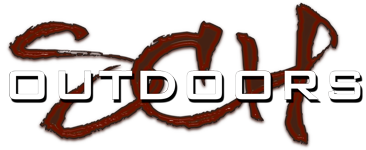8SteelTown said:
Good price and good reviews on it. The difference in price is also the difference in quality. The FoxPro is unrivaled because they run (I believe) 24 bit sounds as opposed to most manufacturers running 12 bit sounds. The quality of each call is MUCH better. You'd be bummed if you dropped $80 on that one and it sounded like dogs barking in a tunnel. IMHO. Might be a good one... I'm sure the others on here will tell you "buy once, cry once". Been through 2 Western Rivers before going to the FoxPro. Each one was a step up from the previous, but the FoxPro blows those 2 out of the water. Again, IMHO.
The following opinion is not intended to be an endorsement nor criticism of any company's (or commenter's) products or statements, and I apologize for the length:
24-bit audio is great. But can you hear the difference between 24-bit and 12-bit on these audio systems? I'm not saying you can't, but think about this. CD-quality is 44100 samples per second, with the samples being 16-bit. That's about the best quality a human ear can hear (any more is completely lost on us). So 96000 Hz audio at 24 bits is lost on us. You can definitely hear the difference between 8 and 16 bit audio. You could probably discern the difference between 12 and 16 bits, as long as you are using good audio equipment. The astute reader, however, will point out that we aren't calling humans- we're calling predators, which have hearing far superior to ours. Good point. But read on....
How good is the audio equipment that is playing back the sound files? Unless your device uses a cassette tape, your e-caller is using digital audio. Let's assume that when that audio was converted to digital (at the time of or soon after recording), this was done using high-quality analog-to-digital (AD) converters. That audio info is stored on some sort of media (CD, DVD, SD card or Micro SD card, etc.). The device then reads the file, and sends it through a digital-to-analog (DA) converter, then to the speaker. I can tell you from personal experience- if your AD converter is crap, your audio is crap. If your DA converter is crap, your audio is crap. That's why audio recorded to your computer's crappy sound card sounds so bad when it's played back. At least, it used to. More people are demanding higher audio quality in order to have better audio in their videos that they create and post online, so I think this is improving. But the principle remains true. So let's assume that the high-end e-callers have acceptable DA converters. What about the speakers? Are the speakers capable of playing that full range of 24-bit audio? Or are they cheap speakers that came from China? Could you tell the difference by listening? Can a coyote? For now, let's assume that the expensive units use the best quality speakers that they can find. What about the amplifiers driving that speaker? Ever notice how a rock concert can be cranked up loud without distortion, but when you do that to your car stereo, it sounds terrible? But let's also assume that you've got a high-quality amplifier in the unit. Great, but read on....
When the audio files were originally recorded, they SHOULD have been recorded to a format that is "lossless". In other words, full-quality, no "compression", with a minimum of 44.1 kHz/16-bit resolution. However, it is highly likely that these files would then be converted to a lower resolution and compressed so that they won't take up as much room on the storage media (CD, SD card, etc.), and usually in the form of MP3 files. MP3-quality for FM radio is typically 128 kbps 16-bit, I believe. If you listen to such a file over headphones, and compare it to the CD version of the song, you might be able to discern the difference, if you know what to listen for. Start dropping the quality from there, though, and you quickly start hearing the difference.
So how good is the hardware? How good are the files that are being played? Crappy files played through pristine hardware sound....crappy. Pristine audio played through crappy hardware sounds....crappy. And if it sounds crappy to us, what does it sound like to the keen senses of a predator?
And finally, your ear will only be able to detect the differences in the quality of these various components at close range. Unless your home stereo equipment is professional-grade or "audiophile" stuff, you won't be able to hear these differences from a distance of 10 feet. Most of the time, you have to wear headphones. So what is a coyote hearing at 300 yards? What are you hearing at 50 feet?
I've been working with audio professionally (full-time, part-time, and volunteer) since 2004, and I still don't consider myself a professional, let alone an authority on the subject. But when comparing the merits of one system over another, these manufacturers aren't going to give you enough information to make a truly informed decision.
So how about it? Which e-caller should we buy? I don't know. But don't drink the coolaid. I'd be more likely to trust the opinions of those who have used multiple systems over the years, who hunt many, many hours per year, and who have been consistently successful. Talk to enough of them, and I think you'll get a better idea of how to proceed. Or be completely confused.
Or, you might just use mouth calls! ;D

